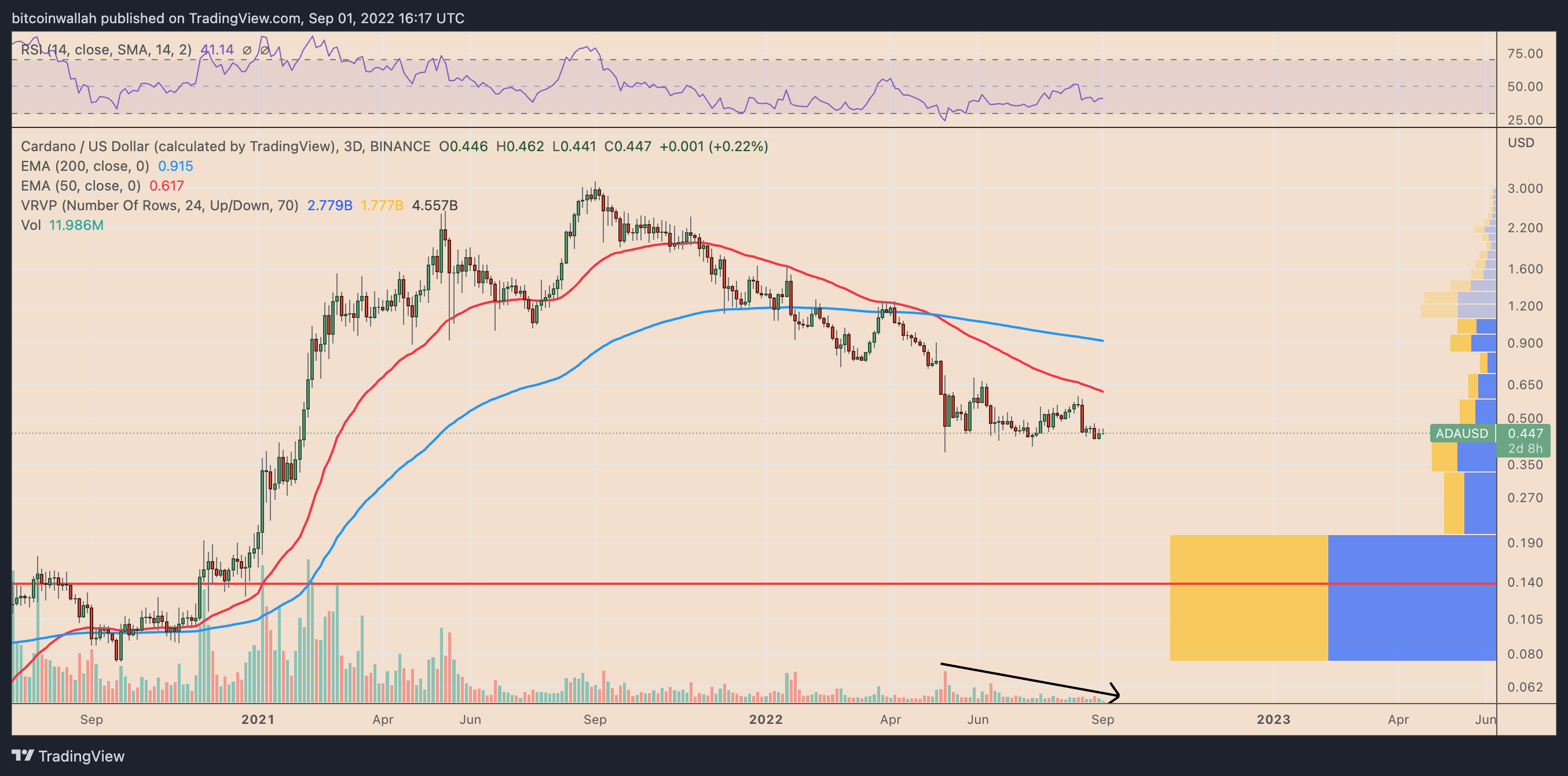Cardano (ADA) market has witnessed back-to-back pieces of good news since Aug. 31, from its listing on Robinhood, a U.S.-based retail investment platform, to the release of its first lending and borrowing protocol, Aada Finance.
Additionally, Cardano developer IOHK stated that they are close to clinching “three critical mass indicators” that would lead to the launch of their long-awaited Vasil hard fork in September. Vasil aims to improve Cardano’s scalability and transaction throughput through pipelining.
The upgrade could also improve the decentralized application (DApp) and smart contract capabilities by changing the Plutus script, a programming language used for smart contracts on the Cardano blockchain.
This week, we’re well on our way to hitting our indicators. Over 80% of SPOs have upgraded and more than 70% of the top DApps we’re tracking have confirmed successful pre-production testing.✅4/8
– Input Output (@InputOutputHK) August 31, 2022
But the uplifting updates have failed to attract adequate buyers as ADA’s price trend in the last 24 hours reveals.
Bear market rally
On the daily chart, ADA’s price rose to an intraday high of $0.462 on Sep. 1, a day after bouncing from its sessional low of $0.424, up nearly 9%.
Related: Cardano outranks Bitcoin in global top intimate brands in new report
Nonetheless, the move accompanied lower trading volumes, suggesting weaker conviction among traders about an extended rally.
 ADA/USD daily price chart. Source: TradingView
ADA/USD daily price chart. Source: TradingView
ADA’s modest price rise also came after a sharp 28.5% decline, typically due to short covering, i.e., when traders buy back borrowed tokens to close their open bearish position, thus lifting the spot price briefly.
As a result, Cardano’s rebound may be a bear market rally. This expectation emerges from ADA’s exposure to macroeconomic risks that have kept the ADA/USD pair nearly in lockstep with U.S. stocks.
 ADA/USD and Nasdaq daily correlation coefficient. Source: TradingView
ADA/USD and Nasdaq daily correlation coefficient. Source: TradingView
For instance, the correlation coefficient between ADA and Nasdaq was 0.80 on Sept. 1.
Descending triangle breakdown ahead?
From a technical perspective, ADA has been painting a descending triangle pattern on its daily chart since May 7.
In detail, descending triangles appear as the price consolidates inside a range defined by a falling upper trendline and a horizontal lower trendline. They typically resolve after the price breaks below the lower trendline and, as a rule, can fall by as much as the maximum triangle height.
 ADA/USD three-day price chart featuring descending triangle breakdown setup. Source: TradingView
ADA/USD three-day price chart featuring descending triangle breakdown setup. Source: TradingView
ADA now tests the lower trendline of its descending triangle setup for a potential breakdown, as shown below. The token will fall to $0.268 by September if the pattern plays out as mentioned above, or a 40% drop from current prices.
The views and opinions expressed here are solely those of the author and do not necessarily reflect the views of Cointelegraph.com. Every investment and trading move involves risk, you should conduct your own research when making a decision.


